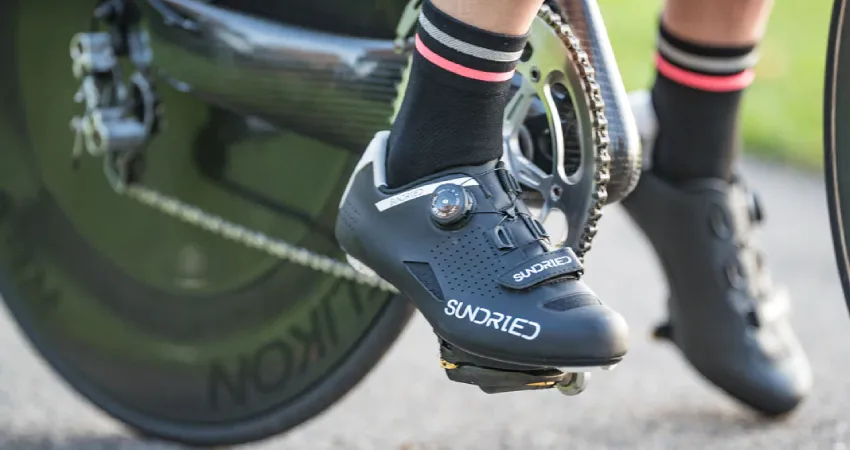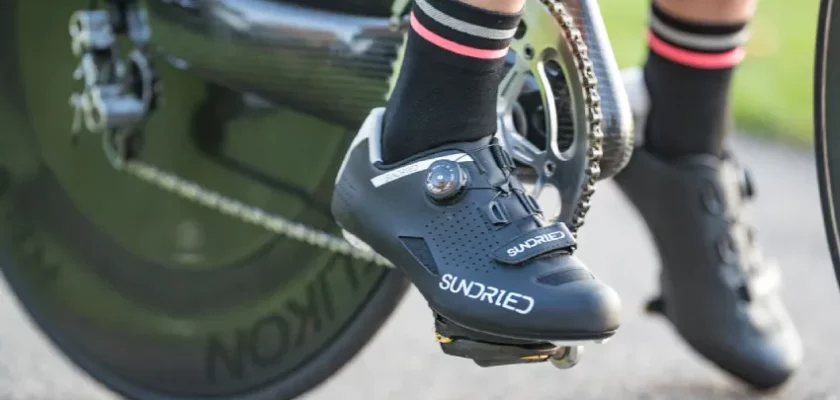You’ve just purchased a new bike and you’re ready to hit the road, but there’s one crucial accessory you’re missing: pedals with cleats. The question on your mind is, “Do pedals come with cleats?” Well, worry not, because I’m here to provide you with all the answers you need.
The answer to your question is, unfortunately, not a simple yes or no. The inclusion of cleats with pedals can vary depending on the brand and type of pedals you purchase.
However, fear not, as there are solutions and options available for every cyclist, regardless of whether the pedals come with cleats or not. So, let’s dive in and explore what the cycling world has to offer!
Do Pedals Come with Cleats?

This is an important question because cleats are an essential component for clipless pedal systems, providing a secure connection between your cycling shoes and pedals.
Do Pedals and Cleats Come Together?
When purchasing a new set of pedals, it’s crucial to understand that whether or not cleats are included depends on the specific pedal brand and model you choose. It’s common for clipless pedals to be sold without cleats, as they are often sold separately.
However, this may not always be the case, and some pedal packages may include cleats as a bonus. To provide clarity, let’s break down the different scenarios you might encounter when buying pedals:
1. Pedals Sold with Cleats
Some pedal brands do offer complete packages that include both pedals and cleats. These packages are convenient for cyclists who are new to clipless pedals or those looking to replace both their pedals and cleats simultaneously.
When purchasing pedals that come with cleats, it’s essential to verify whether the cleats provided are the appropriate type for your cycling shoes.
2. Pedals Sold Without Cleats
Most pedals sold individually, especially higher-end models, do not come with cleats. This is mainly because the choice of cleats depends on several factors, such as the type of cycling shoes you own or prefer, the style of riding you do, and the compatibility with the pedal system you’re using.
Therefore, it’s crucial to check whether the pedals you’re considering come with cleats or if you need to purchase them separately.
3. Pedals Bundled with Cleats (Limited Offer)
Sometimes, manufacturers may bundle their pedals with cleats as promotional offers or limited-time deals. This can be a great opportunity to save money, especially if you’ve been eyeing a specific pedal model and the included cleats match your requirements.
Keep an eye out for these deals when shopping for new pedals but always ensure that the bundled cleats are compatible with your cycling shoes.
Types of Cleats and Compatibility
Once you’ve determined whether pedals come with cleats, the next step is to understand the different types of cleats available and their compatibility with pedals. Cleats come in various designs, each specific to a particular pedal system. The two most common types of cleats are:
1. SPD Cleats
Shimano Pedaling Dynamics (SPD) cleats are widely used in mountain biking, touring, and recreational cycling. These two-bolt cleats have a small metal recess that engages with the corresponding mechanism on SPD pedals.
SPD cleats are known for their ease of use, walkability, and compatibility with shoes designed for both off-road and on-road cycling.
SPD cleats are available in different versions, including:
- SPD-SL: Typically used with Shimano’s road-specific pedals, featuring a wider platform for optimized power transfer and stability.
- SPD-MTB: Designed for mountain bike pedals, these cleats have a smaller profile, making it easier to walk when off the bike.
2. Look Delta and Keo Cleats
Look Delta and Keo cleats are commonly found in road cycling. Look Delta cleats, with their three-bolt pattern, were the original design introduced by Look, while Keo cleats, also with a three-bolt pattern, are an updated version.
These cleats are compatible with a wide range of road cycling shoes and offer excellent power transfer and stability for cyclists who prioritize speed and efficiency on the road.
Choosing the Right Cleats
Now that you understand the different types of cleats and their compatibility, it’s essential to select the right pair for your cycling needs. Here are some factors to consider when choosing cleats:
1. Pedal Compatibility
Ensure that the cleats you choose are compatible with your pedals. For example, if you have Shimano SPD pedals, make sure to select SPD-compatible cleats.
2. Cycling Shoe Compatibility
Check whether the cleats are compatible with your cycling shoes. Different shoe brands and models have specific drill patterns for attaching cleats. Look for compatibility information provided by the shoe manufacturer and cross-reference it with the cleat requirements.
3. Riding Style
Consider your riding style and preference. If you primarily ride on roads, Look Delta or Keo cleats may be more suitable. If you frequently switch between off-road and on-road riding, SPD cleats might be the best option.
4. Float and Tension Adjustment
Cleats offer varying degrees of float, which refers to the ability to rotate your foot slightly while still being engaged with the pedal. Some cleats also have tension adjustment features, allowing you to customize the ease of engagement and release. Consider these features based on your comfort and pedaling mechanics.
Installing Cleats Properly
Once you’ve chosen the right cleats, proper installation is essential to ensure optimal performance and prevent injury. Here are some general guidelines for installing cleats:
1. Cleat Position
Positioning your cleats correctly can enhance your pedaling efficiency and reduce the risk of discomfort or injury. Factors to consider include stability, power transfer, and alignment with the natural angle of your feet. Consult a bike shop professional or a bike fitting specialist for guidance.
2. Cleat Alignment
Ensuring proper alignment of your cleats is crucial. Misaligned cleats can cause knee pain or contribute to inefficient pedaling. Take the time to adjust the angle and rotation of your cleats to suit your riding style and natural pedal stroke.
3. Tightening and Adjusting Tension
Use the proper torque settings to tighten the cleat bolts securely. Loose cleats can affect your efficiency and stability while riding. Additionally, follow the instructions provided with your cleats to adjust the tension according to your preference.
4. Test and Fine-tune
After installation, take your bike for a short ride and pay attention to how your feet feel on the pedals. Keep in mind that small adjustments might be necessary to achieve the most comfortable and efficient positioning.
Frequently Asked Questions
1. Are cleats included when purchasing pedals?
– Cleats are not always included with pedals. It is important to check the product description or manufacturer’s website to determine if cleats are included or need to be purchased separately.
2. Do all pedal brands provide cleats?
– Not all pedal brands provide cleats. Each brand may have its own specific cleat system, so it is essential to verify if cleats are offered with the pedals or need to be acquired separately.
3. Can I use any cleats with any pedals?
– No, each pedal typically requires a specific type of cleat. It is crucial to match the cleats with the compatible pedal system to ensure proper engagement and optimal performance.
4. How do I know which type of cleats to choose for my pedals?
– The type of cleats needed for your pedals depends on the brand and model. Refer to the manufacturer’s documentation or website to determine the specific cleat system required for your pedals.
5. Where can I buy cleats for my pedals?
– Cleats can be purchased from various sources, including bike shops, sports retailers, and online platforms specializing in cycling accessories. Ensure you are buying the correct cleats that are compatible with your specific pedal system.
Final Thoughts
In conclusion, when it comes to buying pedals for your bike, it is important to know that not all pedals come with cleats. While some pedal manufacturers include cleats as part of the package, others may sell them separately. Therefore, it is crucial to double-check before making a purchase to ensure you have all the necessary components.
When considering new pedals, it is essential to assess your specific needs as a cyclist. If you already have compatible cleats or prefer a particular brand, be sure to choose pedals that are compatible. And if you do need to purchase cleats separately, make sure they are the right type for your shoes and pedals.
In summary, the question of “Do pedals come with cleats” does not have a straightforward answer. It varies depending on the manufacturer and specific product. By understanding this and conducting thorough research, you can make an informed decision and ensure a smooth and enjoyable ride.

